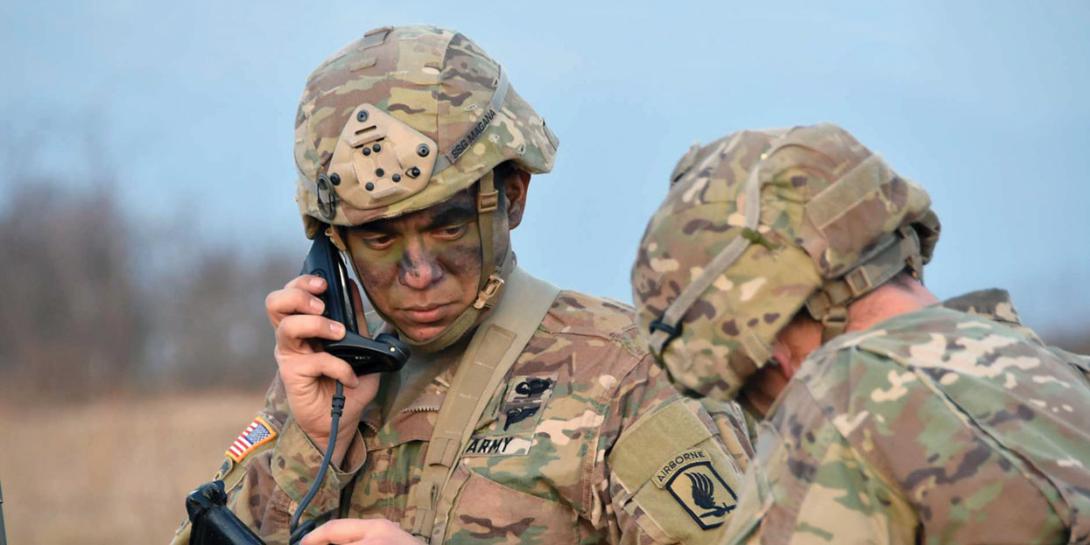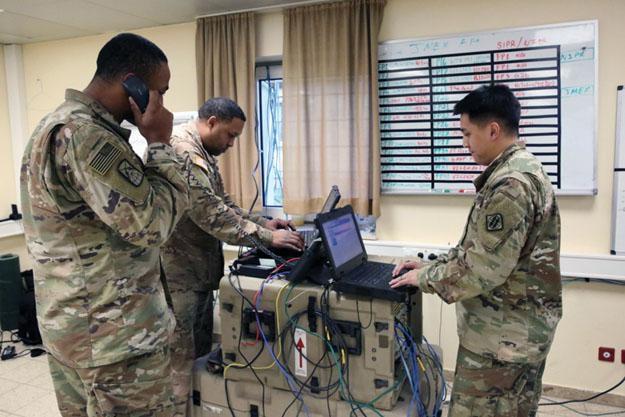The Army's Network Future Is Now
The U.S. Army will be ditching some programs, re-engineering others and seeking innovative technologies to fill networking requirements created by a new operational reality, say the service’s information technology experts. Having a deliberate period of acquisition now, the service is able to incorporate flexibility and innovation into its plans to meet new requirements.
This technology shift is a result of more than 15 years of purchases for war exigencies in Southwest Asia. These acquisitions largely were in response to battlefield needs and not part of organized programs. As a result, Army communications and networking systems are filled with stovepipes both plagued by interoperability issues and ill-suited to meet emerging battlespace concerns.
The shift is part of an Army-wide plan to modernize the force. “We have an ongoing systemic enterprise that is focused on modernization of the Army’s network from top to bottom, end to end—and it is holistic in nature,” says Thomas M. Jordan, deputy director of the Army’s Mission Command Center of Excellence (MCCOE). A retired brigadier general with 33 years of experience in the Army, Jordan has been involved with network modernization in several assignments.
The entire Army enterprise is tied to this effort, which is a major change from the past, Jordan says. That includes the Chief Information Officer/G-6; the Headquarters, Department of the Army, G-3/5/7; the centers of excellence; the research and development community; and acquisition.
“We address all the requirement documents being produced right now,” he explains. “[The plan] addresses the need from an operational perspective, but also it leverages the technologies that are forthcoming—and technologies we don’t even know about but are soon to discover.”
The MCCOE generated its implementation plan based on work done by the other Army enterprise players. A major driver of this endeavor is the existing network, which evolved haphazardly as capabilities were added piecemeal during the wars in Southwest Asia. The Army is not only operating with an ad hoc network with appliques but also looking at an entirely different type of battlespace as it girds for the future.
“We find ourselves with a network that lacks end-to-end interoperability, is complex and is fragile,” Jordan says. “A lot of that is from operating in fixed places in Iraq and Afghanistan. The operational Army was focused on stability operations vice the capacity to fight a large-scale land war—much of which we are reversing now.”
The plan’s holistic nature, designed to steer Army information in a new direction, differentiates it from predecessors, Jordan says. It improves integration of future mission command platforms, better engages commercial and government software standards, and seeks information technology hardware platform solutions. “It’s a modernized plan that implements a strategy that addresses the [new] operational environment, … and it is a more cohesive, integrated plan,” he says.
A key point is that the plan introduces greater flexibility, Jordan continues. One important aspect is its cross-functional teams, which are designed to seek available technology solutions for rapid experimentation, demonstration and evaluation. The “engine of innovation” is driving this action, he relates.
These cross-functional teams will provide the flexibility needed to keep up with technology innovation, Jordan offers. “We’re linking in, through those teams, much closer to industry,” he says.
The Army will be halting some programs that do not remedy operational shortfalls, Jordan states. Decisions will be assessment-based as part of a revamped acquisition process that does “finding, trying, adapting and buying better,” he says. Again, the cross-functional teams will be crucial.
“That is a major change in terms of this Army strategy and in the implementation plan,” he declares.
The center’s modernization and implementation plan addresses the operational requirements to achieve the Army’s modernization plan, which is principle-oriented, Jordan emphasizes. The key operational requirements of the overall plan are a converged mission command network; a common operating environment; a synthetic training environment; network augmentation and extension; and deployable, integrated and mobile command posts.
The Army is bringing together these capabilities in four lines of effort: developing a common operating environment, improving interoperability, creating mobile command posts and building a unified network, Jordan explains. A common operating environment will enable plug-and-play-applications with a common set of software, which also will eliminate many interoperability hurdles. For the unified network, implementation could be complicated. The Army must determine whether to halt certain purchases and buy off-the-shelf technology and then restate writing requirements to go forward.
Interoperability is at the heart of many networking problems. Jordan relates that the Army Battle Command systems were developed independent of each other, and interoperability was not a target. Consequently, commanders wound up having to build increasingly larger tactical operations centers full of different functional stations. Each system independently required life-cycle support, and soldiers often were not effectively trained on them, he states. Geographically diverse systems frequently were connected through mountaintop antennas. Now, the center’s plan combines network augmentation and extension using terrestrial and airborne capabilities.
But at the core of the Army’s network revolution is the ability to deploy an agile mobile command post. Past mobile command posts employed line-of-sight radios, which will not work effectively in rough terrain. The Army needs an agile, deployable post that can maintain functions on the move, and this will require flexible technology capabilities and acquisition.
The MCCOE is a main player in all four lines of effort and, in some cases, is leading by producing the actual requirement documents or helping to chair or co-host different events in ongoing forums to further the effort. The Mission Command Requirements Governance Team, which the MCCOE co-hosts with the Army Capabilities Integration Center, considers all the requirements being developed across the service’s centers of excellence.
“We deal with concepts, we develop requirements, we experiment with those concepts, and we write doctrine,” he says.
In this process, the team also develops network architecture. It bases this work on requirement documents produced by the Army Training and Doctrine Command. These documents describe how technology supports the Army force blueprint. The MCCOE sets the direction on some aspects of implementing the overall Army plan, Jordan explains.
Research is a vital element of this plan, as it must feed new technologies and capabilities to the force. Jordan relates that, for example, the MCCOE has its own ongoing research into how it can leverage artificial intelligence for better decision making. Leader development, learning and action are as important as a communications network, he explains, noting that one of the center’s subordinate organizations is the Center for Army Leadership.
Some of the plan’s effects are evident. The Army already is starting to see changes in its radio-buying strategy, he points out. Part of what the MCCOE does is consider different radio configurations that provide better mobile capabilities and are easier to operate. The Army cascades equipment into formations through capability sets, so some new gear has begun to reach the force. This strategy also involves operating tools such as antennas.
Flexibility and innovation will drive the fielding of new systems. For example, a mobile command post that must put out lower emissions, offer better radio and satellite protection, and be transportable by air may mandate innovative ways of introducing it into the force, Jordan offers. “We’re in the process of reviewing and looking at—for antennas, line-of-sight and beyond line-of-sight capabilities—that kind of command post. We’re looking at just what is a command post” that would meet those requirements, he adds.
With all these different activities designed to make a more effective force, the implementation plan is more than a futures document. Jordan emphasizes that this plan is being executed now: “We’re not waiting for anything.”






Comments